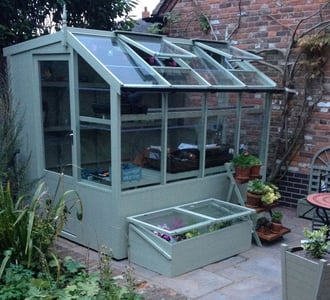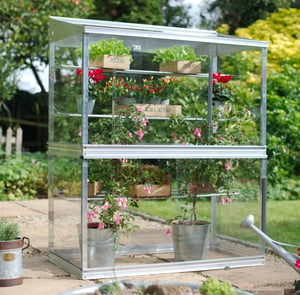Top Benefits of Greenhouses for Home Gardening and Commercial Use
Top Benefits of Greenhouses for Home Gardening and Commercial Use
Blog Article
Greenhouse garden is one of the very satisfying ways to develop crops year-round, but it requires cautious preparing and practices to ensure success. With controlled problems, you can feed plants regardless of outdoor climate, but it takes the best methods to generate a perfect environment inside your greenhouse.Below are a few important recommendations to greatly help your plants prosper through the entire year.

Focus on Temperature Control
Maintaining the proper heat is critical for greenhousegardening. Flowers succeed in different heat stages relying on the type, so it's necessary to monitor and adjust temperatures accordingly. During colder months, invest in a trusted greenhouse heater or warmth techniques to maintain warmth. Use automated ports or supporters in summertime to stop overheating, as temperatures above 85°F may pressure crops and stunt their growth. Coupling these methods with an easy thermometer enables you to maintain a consistent environment.
Manage Humidity Levels
While greenhouses obviously keep larger humidity levels, an excessive amount of moisture can inspire mold or form growth. For a wholesome harmony, measure humidity frequently utilizing a hygrometer. Shoot for approximately 50-70% general moisture, changing with proper ventilation systems or even a dehumidifier if needed. Furthermore, spacing crops effectively guarantees greater air circulation, reducing the risk of fungal diseases.
Choose the Right Plants
Not all flowers are ideal for greenhouses. To increase yield and achievement, choose crops that align well with the summer season and your greenhouse conditions. Throughout cooler weeks, grow crops like lettuce, kale, or broccoli, which flourish in a colder environment. Warm-weather crops like tomatoes, cucumbers, and peppers flourish in the spring or summer within higher temperatures. Pairing complementary plants also helps build biodiversity and normally deters pests.

Use Quality Soil and Fertilizers
The caliber of your earth straight influences place growth. Choose a nutrient-rich soil combine specifically made for greenhouse plants. Enrich your planting bedrooms with normal matter like compost to improve fertility. Frequently supply your flowers with fertilizers matched for their needs—some flowers may need large nitrogen for leafy development, while others thrive with potassium-rich mixes for fruit development.
Practice Integrated Pest Management
Pests will get their way in to even probably the most controlled greenhouses. Present valuable bugs like ladybugs to target harmful pests such as for example aphids naturally. Inspect plants usually and remove any pests physically if discovered early. Consider normal or compound remedies as a last resource but utilize them sparingly in order to avoid damaging useful bacteria and organisms.
For more info make sure you click on this link greenhouses. Report this page